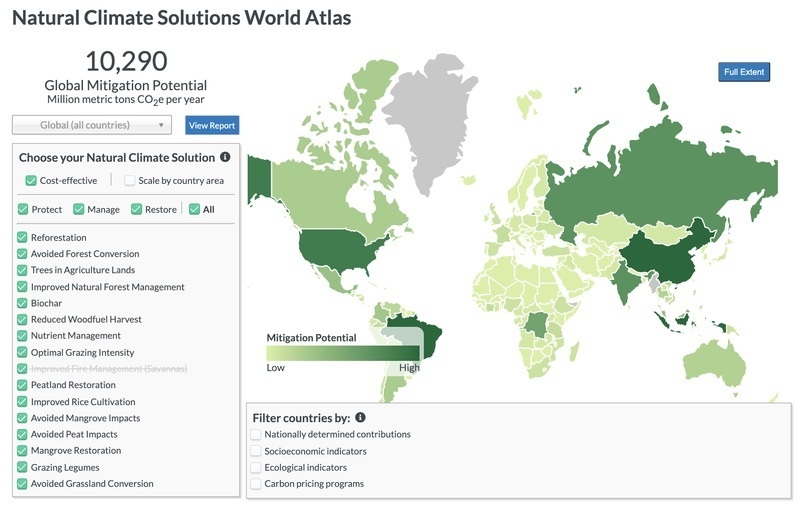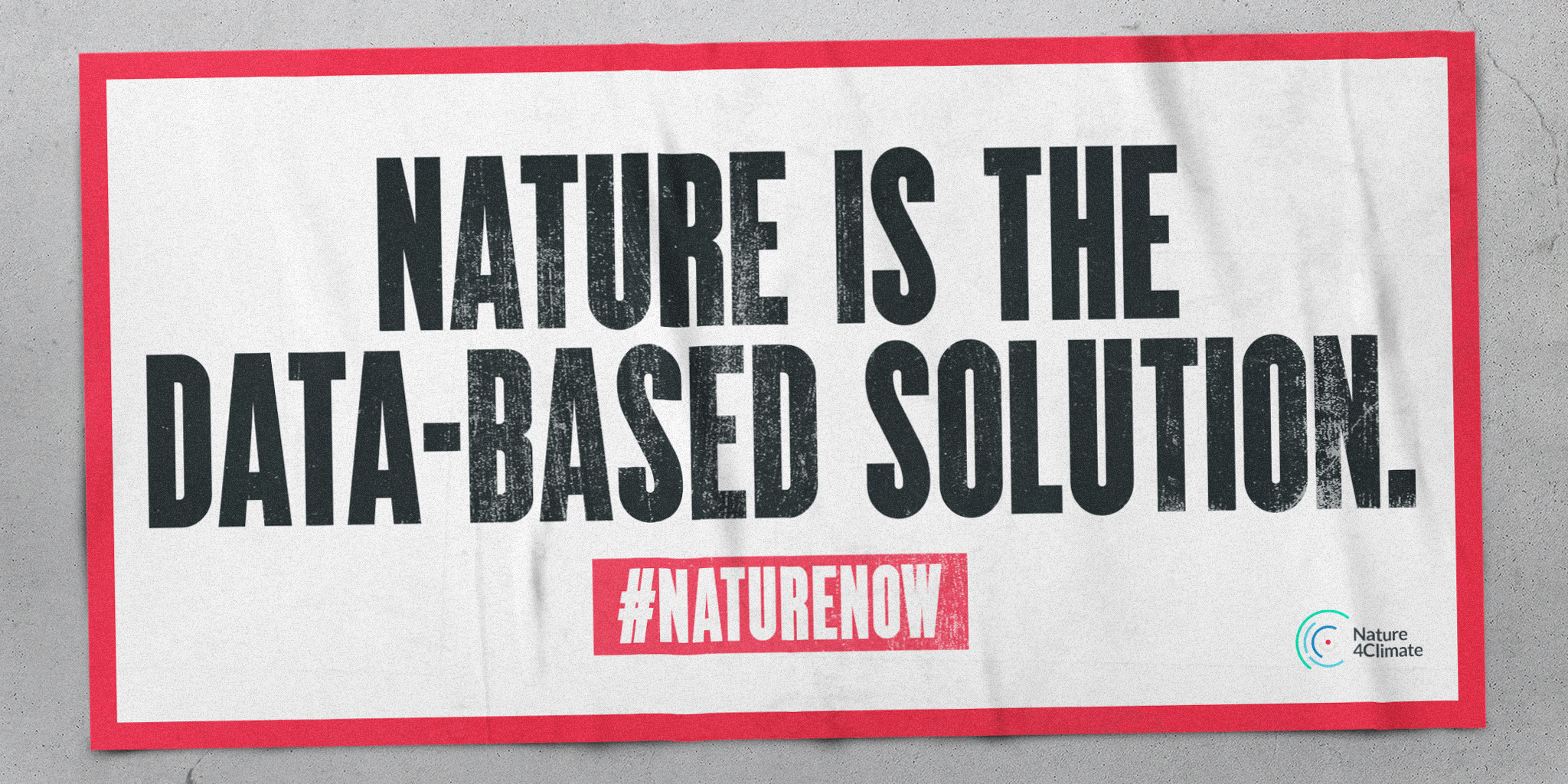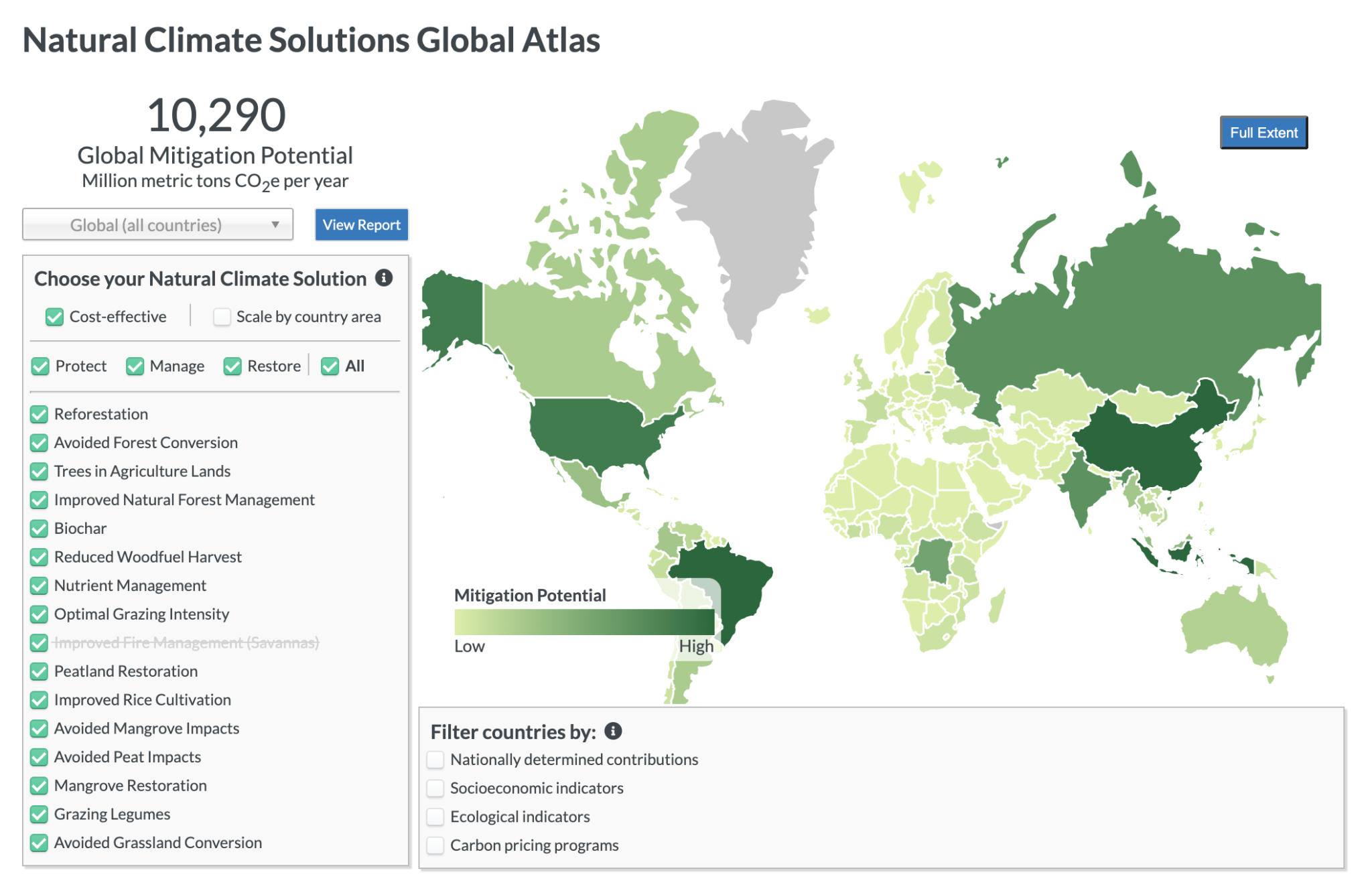Trust the numbers: Most comprehensive and up-to-date NCS World Atlas of NBS mitigation potential

Wednesday 23rd September 2020 — Our NCS World Atlas has had a makeover and a shot in the arm with new data. It helps policymakers, the perplexed, the curious and the trailblazers come to terms with natural climate mitigation potential globally with a new influx of regionally-explicit science and a simple, intuitive interface.
Wednesday 23rd September 2020
Confused about the science around natural-climate solutions? Curious how your country compares to others? Perplexed about options, potentials and pledges? Fear not.

Our NCS World Atlas has had a makeover and a shot in the arm with new data. It helps policymakers, the perplexed, the curious and the trailblazers come to terms with natural climate mitigation potential globally with a new influx of regionally-explicit science and a simple, intuitive interface.
Incorporating science from multiple studies and dozens of authors from the world’s leading organizations and universities, N4C’s new global atlas depicts the potential and opportunity to help mitigate climate change using natural climate solutions in 196 countries.
“Science marches on. In just a few years, we have been able to add in new options, more detail and see what it all adds up to. This new atlas is probably the most comprehensive tool we have right now for country leaders to jump in and see where nature can help them meet their climate targets,”
Chris Zganjar, Lead Developer and Scientist, The Nature Conservancy.
The updated atlas includes, for example, data from a paper released today in Nature which maps potential carbon accumulation rates from natural forest regrowth. While the new data is not intended to replace national or site-specific data, the 1-km resolution map scientifically brightens estimates of the potential carbon returns from letting forest grow back in any part of the planet. It’s the world’s first ‘wall-to-wall global map’ for assessing natural forest regrowth – natural regreening of the planet – and represents the kind of progress scientists like best: that which can be applied directly and immediately to policy.
“Natural climate solutions can provide up to a third of the emissions reductions needed by 2030 to limit global warming, but reductions in fossil fuel emissions must provide the other two-thirds. Nature is a critical complement to much needed reductions in fossil fuel use,” said Lucy Almond, director of Nature4Climate. “We hope to see a range of commitments this week ahead of the UN biodiversity summit which are good news for nature and climate. This atlas is one new tool to help governments and businesses see where best to invest energy and capital.”
